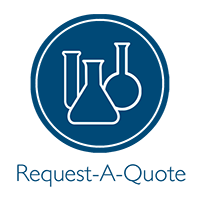This method is used for the determination of asbestos from workplace air samples. The sample is collected cellulose ester membrane filter (MCE) and analyzed using PCM (phase contrast light microscopy). Fibers < 0.25 µm diameter will not be detected by this method.
This method is used primarily used for estimating asbestos concentrations since PCM does not differentiate between asbestos and other fibers. If identification of fibers is needed, NIOSH Method 7402 using electron microscopy can be used for confirmation. This method may be used for other materials such as fibrous glass by using alternate counting rules.
The quantitative working range is 0.04 to 0.5 fiber/cc for a 1000-L air sample. The limit of detection (LOD) depends on sample volume and quantity of interfering dust, and is <0.01 fiber/cc for atmospheres free of interferences.
NOTE: This revision replaces Method 7400, Revision #3 (date 5/15/89).
No Obligation Quotation for Analytical Services
If you would like us to provide a quote for laboratory analysis, just provide us with as much information as you can about your project (the more, the better) and we'll provide you a quote via email. As you are searching or browsing our Analytical Guide, you'll see the Request-A-Quote icon... just click on it to start the request process.
| Hold Times, Preservatives, Preps, Collection, Analytical & Documentation | |
|---|---|
| Holding Time: | None specified in the method. |
| Preservatives: | None specified in the method. |
| Required Preps: | 25 mm, 0.8 micron MCE filter |
| Collection Method: | The method recommends a 0.5-16 L/min. flow rate with a 400L sample volume. |
| Analytical Methodology: | PCM |
| Documentation: | |
| Analyte | Formula | CAS Number | Detection Limit | |
|---|---|---|---|---|
| Asbestos | 1332-21-4 |
7 |
fibers/mm² | |
* The analytes and detection limits listed for each method represent the typical detection limits and analytes reported for that particular method. Keep in mind that analyte lists may vary from laboratory to laboratory. Detection limits may also vary from lab to lab and are dependent upon the sample size, matrix, and any interferences that may be present in the sample.